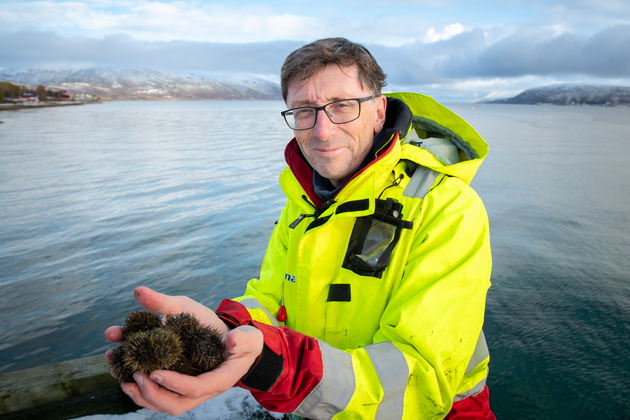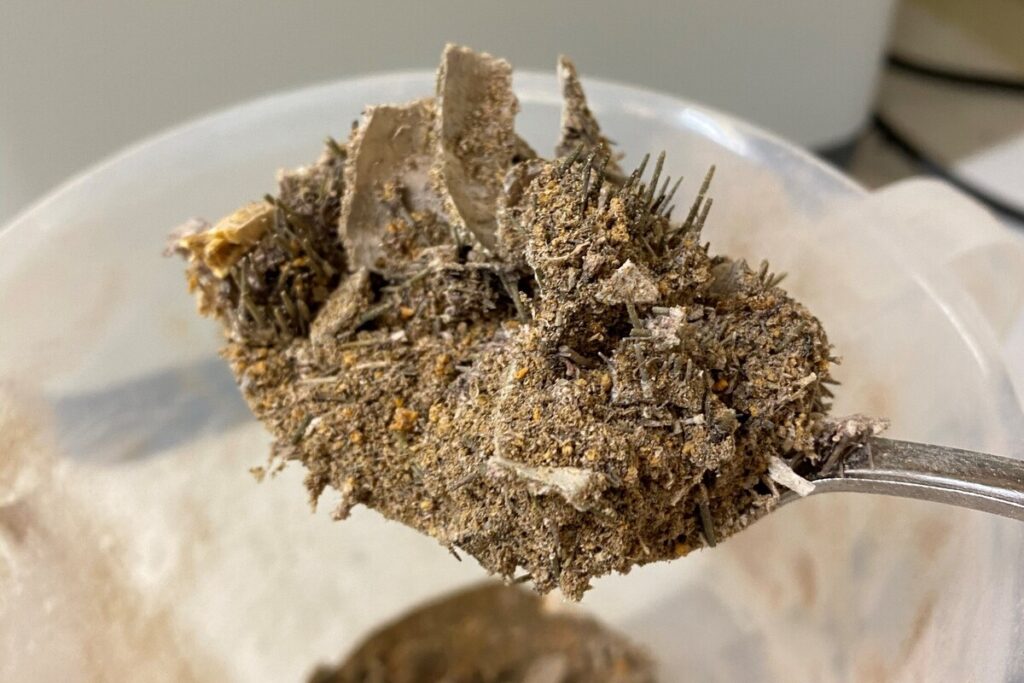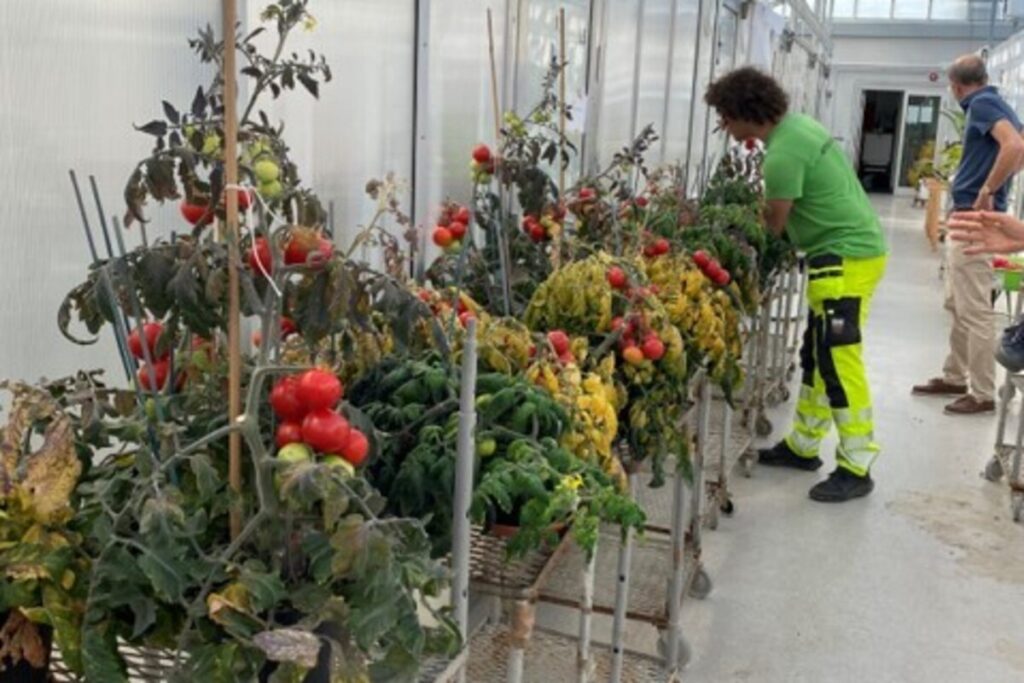From ocean floor to garden: the potential of sea urchin fertiliser

Getting a green and beautiful lawn is easier said than done. Some of us need tools to help us get there. How about trying flavoured sea urchins?
It might sound like a strange idea, but scientists at Nofima have discovered that these spiny marine creatures have surprising potential as plant nutrients.
Next time you see a sea urchin, you might think of it as a small, spiny fertiliser factory.

Vitamin bomb for your plants
In a recent study, senior scientist at Nofima, Philip James, examined green sea urchins from the coast of Northern Norway. Nofima scientists dried and powdered the sea urchins, finding that the powder contains many of the same nutrients plants need to grow and thrive.
“We were surprised by how much nutrition these small spiny balls actually contain,” says James, who leads the research project.
“It’s like an underwater treasure chest of nutrients for our plants,” highlights the enthusiastic senior scientist.
Changes with the seasons
The study showed that the amount of nutrients in the sea urchin powder changes with the seasons. In the spring, the powder is particularly rich in nitrogen and phosphorus—two important building blocks for plant growth.
It is as if the sea urchins load up with nutrients after the long winter, just when plants need it most. The available nutrients are much higher than in traditional fertilisers, making them an sustainable alternative for extra plant growth.
From problem to valuable fertiliser

“We are talking about using what many see as a problem species pest in the sea as a valuable resource on land,” explains the senior scientist.
Perhaps future gardening enthusiasts will swap bags of synthetic fertiliser for sacks of Norwegian-produced sea urchin powder?
James stresses that more research is needed before sea urchin fertiliser can become a reality on store shelves. However, the study opens up exciting possibilities at the intersection of sea and land, showing that solutions to agricultural challenges can come from unexpected places—even from the ocean floor.
Facts about the research
Sea urchins have invaded the Norwegian coast over the past 50 years, and they have become a problem because the urchins eat up the kelp forest. When the sea urchins are fished out, the kelp forest quickly grows back. In order to increase the degree of sea urchin uptake, researchers at Nofima have tried to find solutions for what the sea urchins can be used for. This is how the sea urchin fertiliser was created.
The study has investigated what sea urchins consist of. The sea urchins were collected three times a year at three locations within 10 kilometres of each other in Northern Norway. They were dried, crushed and pulverised before being analysed for nutritional content. The results showed that the sea urchins have high calcium and magnesium levels. They also contain smaller amounts of nitrogen, phosphorus and potassium, as well as the micronutrients iron, zinc, manganese and copper. The researchers found large variations in the nutrients according to different times of the year and the different harvest locations.
Publications
Contact person
Research areas
